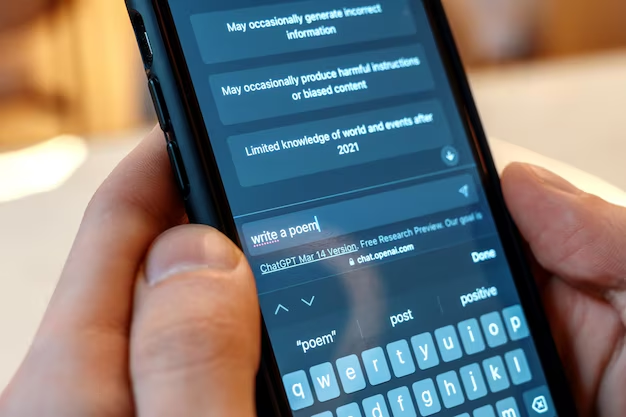The competitive business world requires many effective ways of communicating. As technology grows, so are the advances in how we communicate and reach out to our customers, clients, and employees.
One of those innovative ways is P2P text messaging for businesses. This powerful tool adds a personal touch to digital communication, allowing companies to connect with an audience more personally and directly than ever before.
This blog post will highlight some of the top five benefits of using P2P text messaging services for businesses.
Enhance Personal Connection
P2P text messaging is a real human interaction in the age of automated messages and chatbots. Real people send customized text messages to people, meaning that individuals are spoken to person-to-person, which feels much more natural and interesting.
Why it matters:
It personalizes communication, making the receiver more credible with the message and adding value to the brand. It enhances customer satisfaction because people feel their value and recognition.
Personalized messages will always remain at a better response rate, which may end in real conversation and strong engagement.
How to Use this Benefit:
- Besides including this in your sales script, you can also let your team know how to maintain a conversational tone that best shows your brand voice.
- You can let your team be creative in personalizing messages themselves with their customers’ information.
- Have them introduce a system where staff can quickly bring up valuable information about the recipient so that conversations can be contextual and meaningful.
More Engagements
Compared to other modes of digital communication, text messages have very high open and response rates. Add this to the personal nature of P2P text messaging for businesses, and you have an immensely engaging tool.
Some statistics to consider:
Where text messages have an open rate of 98%, emails can only achieve an average open rate of 20%. While the average response time to a text message is 90 seconds, email response times average at 90 minutes.
Why it matters:
Text messaging enhances communication by increasing the visibility of your messages, making them more likely to be seen and read.
It also allows for timely, real-time conversations with your audience due to faster response times. This leads to more effective marketing and outreach campaigns, as higher engagement boosts overall campaign success.
How to Optimize Engagement:
- Utilize P2P Text Messaging when Communications Are Time-Sensitive or Contain a Limited-Time Offer: If there is urgency around your communication, then using P2P text messaging can help convey that urgency well. This is also true for communications containing limited-time offers.
- Quick Follow-up Campaigns: Have a follow-up campaign strategy ready to ensure the momentum of the conversation isn’t lost.
- Analyze Engagement Metrics: Do this to refine your messaging and timing for optimal results.
Scalability and Efficiency
Though it is true that in the case of P2P text messaging, personalized messages are involved, with the assistance of modern platforms and tools, this can be scaled up without much hassle. Therefore, a business can have a personal touch while it targets a big group.
Key benefits:
- Reach more: One staff member can have several conversations simultaneously, meaning higher outreach capacity.
- Messaging consistency: Use pre-written templates to ensure the key information is delivered consistently across the board.
- Data-driven optimizations: Most P2P text messaging platforms will offer analytics for refinement in your approach according to performance data.
Why it matters:
Text messaging is a cost-effective way to reach a large audience without increasing expenses. It saves time by streamlining communication while maintaining quality interactions.
Additionally, it offers scalability, allowing businesses to easily adjust the scope of their campaigns based on their needs and growth.
How to implement for efficiency:
- Invest in a strong P2P text messaging platform that integrates with your current CRM or database.
- Develop a library of pre-written message templates for common situations, saving time but maintaining consistency.
- Train your staff in best practices for managing multiple conversations.
How to Provide Better Customer Service
Business P2P text messaging isn’t just about marketing or sales. One could use it to improve customer service. By offering text-based customer support, you provide your customers with a simple and familiar place they can look to if they need help.
Customer Service Benefits:
- Faster resolution times: Text-based conversations often resolve issues faster than phone calls or emails.
- Convenience for customers: Many people would rather not call, especially when they have only a quick question or update to provide.
- Easy documentation: Text conversations are far easier to document since the full interaction is easily available for review and reference by both the customer and the business.
Why it matters:
Offering support through text messaging can boost customer satisfaction by providing help through a preferred channel. It also reduces the workload on phone lines and email by diverting some inquiries to text, allowing for more efficient use of resources.
Additionally, texting enables proactive customer service, allowing businesses to reach out with important information or follow-ups before issues arise.
Implementing Effective Text-Based Customer Service
- Clearly communicate response times and hours of availability.
- Train customer service representatives on their new text-specific communication skills.
- Create an escalation process for channel issues outside the scope of text-based service.
 Versatility across Business Functions
Versatility across Business Functions
One of the foremost business benefits of P2P text messaging concerns its versatility: the medium of communication can be used in as many ways as possible across different departments and purposes.
Business function applications include:
- Marketing: Personalize promotional messages, event invitations, or follow-up messages.
- Sales: Nurture leads, set up appointments, and offer product information.
- HR: Communicate employee scheduling, company updates, or benefits to employees.
- Operational: Discuss operational issues with team members, vendors, or partners or request immediate updates.
- Gathering feedback: Conduct questionnaires or opinion gathering on a more informal basis.
Why it matters:
Having a single unified communication strategy allows businesses to use one method for both internal and external messages, making communication more efficient. Using a multi-purpose tool helps save money by eliminating the need for different solutions for various tasks. Additionally, implementing texting can improve collaboration and information sharing between departments, enhancing overall coordination within the organization.
The advantages of multi-functionality
- This would involve training different departments to use P2P text messaging effectively according to their needs.
- Establish guidelines for appropriate texting for different business functions so that professionalism may be consistently upheld.
- Regularly publish best practices and success stories within the different departments, inspiring innovative uses of the platform across the board.
P2P Text Messaging Implementation in Your Business
With the top five business benefits of P2P text messaging, let’s proceed to give illustrations on how one can implement this approach in business:
- Choosing the Right Platform
All this means is picking a proper platform for your needs that offers great features and easy integration into whatever system you have in place.
- Create Policies
Come up with guidelines for when and how to use P2P text messaging so as not to make your business vulnerable to compliance based on laws such as the TCPA.
- Train Your Team
Training on the platform, best communication practices, and personalizing interactions effectively.
- Start Small and Scale
Begin with a pilot program in one department or for one campaign, then scale up as results and learnings would warrant.
- Monitor and Analyze
Regularly review performance metrics, including feedback from staff and recipients, to continually hone your approach.
- Stay Compliant
Ensure that consent is duly obtained from recipients and that the opt-out instructions comply with the applicable regulations.
Key Takeaways
- Sterling’s business P2P text messaging creates a magic combination of personal touch and technological efficiency.
- This mode of communication may phenomenally affect your business results in manifold ways by increasing personal touch, boosting response rates, assuring scalability, amping your customer service, and providing versatility for most of your business functions.
- Like any other new approach, it’s best to proceed with P2P text messaging thoughtfully and strategically.
- The point of full potential growth, better customer relationships, and enhanced communications throughout every level of your organization can be reached when the tool is put into practice thoughtfully and its approach is refined regularly.
Final Thoughts
In a world that is becoming increasingly digital, the effectiveness of personal, direct communication should not be underestimated. P2P text messaging is the sweet spot between the efficiency of digital outreach and the warmth of person-to-person interaction.
While companies seek new ways to cut through the noise and meaningfully connect with an increasingly complex audience, P2P text messaging is a very good tool in modern communication.



